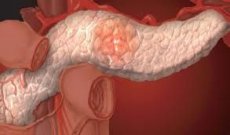Scientists have come to a complete cure for pancreatic cancer
Last reviewed: 23.04.2024

All iLive content is medically reviewed or fact checked to ensure as much factual accuracy as possible.
We have strict sourcing guidelines and only link to reputable media sites, academic research institutions and, whenever possible, medically peer reviewed studies. Note that the numbers in parentheses ([1], [2], etc.) are clickable links to these studies.
If you feel that any of our content is inaccurate, out-of-date, or otherwise questionable, please select it and press Ctrl + Enter.

Having analyzed in detail the genes expressed by freely circulating tumor cells, scientists have identified a potential target for the treatment of metastatic pancreatic cancer, which is considered one of the most aggressive.
Oncologists from the Massachusetts Hospital (Boston, USA) and their colleagues report that they have been able to detect an increased level of WNT2 oncogene expression in free circulating cells (SCCs), both in pancreatic cancer mice and in humans the same sad diagnosis.
The researchers used a specially designed chip that functions on a microfluidic principle; it was he who allowed to sort the CCC from the blood samples of GM mice, programmed to develop the right type of cancer. Then, a comparative analysis of the expressed genes in the free circulating cancer cells and maternal tumor cells was followed. Its purpose is to identify possible differences in the set of genes that allow malignant cells to enter the bloodstream. And here is the result: several genes expressed by CSC at much higher concentrations were detected at once.

Among this group of genes, special attention of oncologists was attracted by WNT2 - one of the participants in the signaling pathway that starts both embryogenesis and cancer. SCC, as well as cancer metastases, showed a very high level of expression of WNT2, while in the primary tumor cells this gene was practically not detected (apparently the exception was just those cells that were ready to free-swimming, replenishing the orderly series of SCC). Of course, more research will be required, but now it can be said with a high degree of certainty that it is WNT2 that allows tumor cells (no, not budding) to avoid anoykes, one of the mechanisms of the human body, by means of which all foreign cells are removed from the bloodstream. It is clear that in the case when SCCs remain in the blood, their chances of metastasis increase dramatically.
But the discovery would hang in the air, leaving enough room for doubt and alternative interpretations if the scientists did not identify and test the substance blocking the work of WNT2 and thereby the overwhelming ability of CCS to survive in the bloodstream.
Although most of the work was done on mouse models, the researchers found that the same survival mechanism is also used by freely circulating pancreatic tumor cells in humans.

 [
[